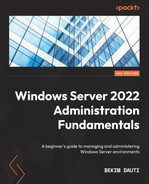9
Storing Data in Windows Server 2022
This chapter is designed to give you a brief understanding of storage technologies and related topics. From a technical point of view, a disk is considered one of the server’s core hardware components. For example, it stores, accesses, provides, and manages digital data, files, and services. That said, you can tell how vital these technologies are in the computer world.
This chapter will teach you about physical interfaces and disk controllers, storing data in a storage medium, and the system types that are used in network environments. Various storage concepts and protocols such as Data Deduplication (Dedup), Storage Spaces Direct (S2D), Software-Defined Storage (SDS), Small Computer System Interface (SCSI), Internet Small Computer System Interface (iSCSI), Fibre Channel (FC), Fibre Channel over Ethernet (FCoE), and others will be covered in this chapter. Hence, you will learn how to manage a server’s storage using Server Manager and Windows PowerShell.
Furthermore, you will be introduced to the concepts and types of Redundant Array of Independent Disks (RAID). After that, you will learn about volatile and non-volatile storage technologies such as RAM, ROM, hard disk drives (HDDs), solid-state drives (SSDs), optical drives, and flash memory drives and cards. Finally, this chapter will conclude with an exercise on enabling Dedup in Windows Server 2022.
The following topics will be covered in this chapter:
- Understanding storage technologies
- Understanding RAID
- Understanding disk types
- Chapter exercise – enabling Dedup on Windows Server 2022
Technical requirements
To complete the exercise in this chapter, you will need the following equipment:
- A PC with Windows 11 Pro, at least 16 GB of RAM, 1 TB of HDD, and access to the internet
- A virtual machine with Windows Server 2022 Standard (Desktop Experience), at least 4 GB of RAM, 100 GB of HDD, and access to the internet
Understanding storage technologies
Can you imagine an application server without RAM or a file server without an HDD? These questions may sound odd because RAM and HDD are inseparable from today’s computer systems. This section aims to show you how vital storage technologies are to computers and that they come in various types, shapes, and sizes for different purposes. Besides the fact that storage technologies are an objective of the certification exams, their importance is absolute in information and communications technology (ICT). Therefore, this chapter is dedicated to storage technologies.
In most cases, the server will likely require ample storage space besides high processing power, sufficient RAM, and several network connections. Whether it’s a single server or a cluster of servers, IDE, SAS, SCSI, DAS, NAS, SAN, and RAID represent various storage technology options.
Let’s begin by understanding what the different storage types are.
Exploring different storage types
As noted earlier, storage technologies are numerous, and there are multiple ways and methods to use them. Because of that, different types of storage technologies exist. Thus, the following list will help you become familiar with the main categories of storage technologies:
- Optical disks offer large capacities and read-and-write accepted speeds. However, they continue to play the role of backup media for data.
- HDDs offer large capacities and high read-and-write speeds. However, after a long period of being the first choice for OSs, they seem to have lost. Thus, HDDs are mainly used today to store client/server app data.
- SSDs are becoming a popular storage technology with growing capacities and extraordinary read-and-write speeds. As a result, SSDs have become the secondary storage choice where an OS is installed in today’s computers.
Next let’s get acquainted with the Advanced Technology Attachment (ATA), Parallel ATA (PATA), Serial ATA (SATA), and Small Computer System Interface (SCSI) interfaces, which are used to connect storage technologies.
The ATA, PATA, SATA, and SCSI interfaces
Like many technologies for storing data, various interfaces are available to connect these storage devices to computers. Therefore, when acronyms such as ATA, PATA, SATA, and SCSI are mentioned, you can immediately determine the interface type and its usage. For example, ATA, also known as Integrated Drive Electronics (IDE), is a legacy interface for connecting HDDs, optical disk drives, floppy disk drives, and related storage technologies to computers. The two most popular types of ATA interfaces are as follows:
- PATA: This uses a 40-pin connector and cable to transfer data to connect the storage device to the computer’s motherboard. It uses Molex as a power connector to connect the storage device to the computer’s power supply. The disk controller resides on a drive itself.
- SATA: This represents a replacement for the PATA interface and is widely used in PCs. It uses a 7-pin connector to transfer data and connect the storage device to the computer’s motherboard. It also uses a 15-pin connector to connect the storage device to the computer’s power supply. Like PATA, the disk controller is also located on the SATA drive.
- These can be seen in the following figure:
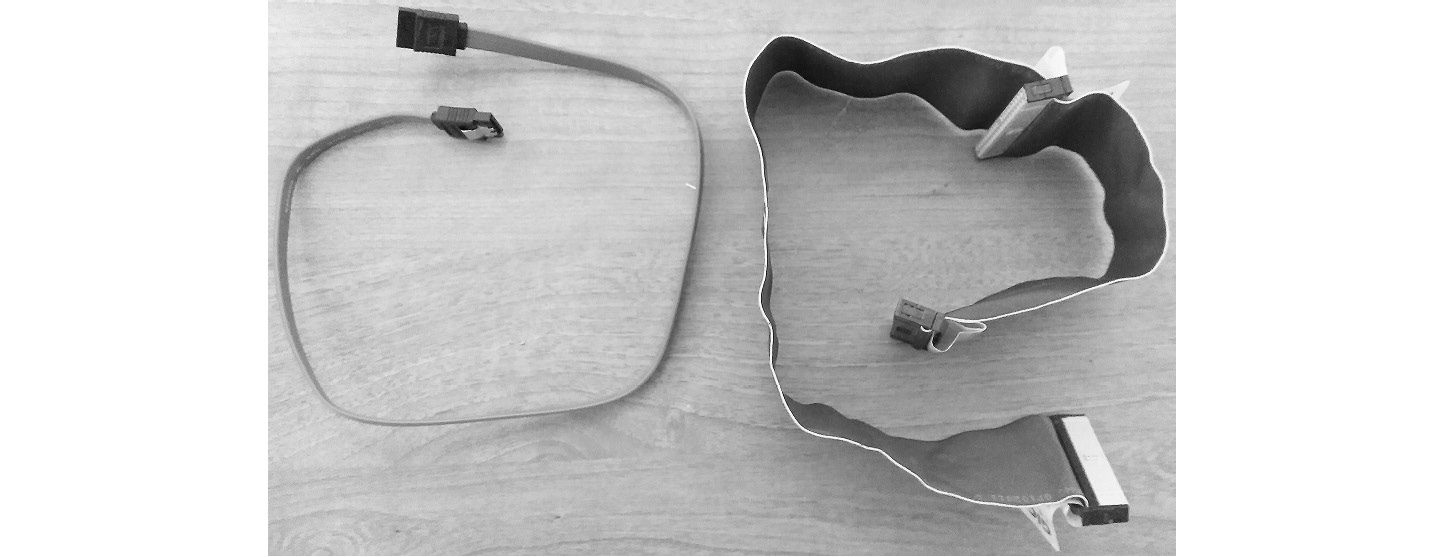
Figure 9.1 – PATA and SATA data cables
Another type of interface is SCSI. Pronounced scuzzy, SCSI is another interface that connects storage devices and peripheral devices to computers. The two most popular types of SCSI are SCSI Parallel Interface (SPI) and Serial-Attached SCSI (SAS). While SPI is considered the legacy version of SCSI, SAS is the modern version and provides high data transfer rates, and is widely used in servers.
Next, we will learn about the Peripheral Component Interconnect (PCI) and PCI Express (PCIe) expansion cards.
PCI and PCIe
In the mid-90s, PCI replaced IBM’s Industry Standard Architecture (ISA), a 16-bit internal bus specification for PCs. Unlike ISA, Intel’s PCI offered 32-bit and 64-bit internal bus specifications, enabling more data to be communicated to RAM. Later, with the increased demand for faster speeds, PCI was replaced by PCI Express (PCIe), as shown in the following figure. PCIe is an internal serial bus standard with four connections: PCIe x1, PCIe x4, PCIe x8, and PCIe x16. It transmits data in full-duplex mode, sending and receiving data simultaneously over communication paths known as lanes:

Figure 9.2 – The PCIe slot
Next, let’s become familiar with local storage, which usually refers to a computer’s internal disk.
Understanding local storage
Local storage refers to the HDD or SSD directly attached to the server. As the name suggests, Direct-Attached Storage (DAS) refers to a single disk or a group of disks known as a disk subsystem (see Figure 9.3) directly attached to a server. Therefore, you will not be mistaken if you think of your computer’s HDD as DAS. In addition to internal storage devices, external storage devices connected to computers with any of the interfaces mentioned earlier are also considered DAS:
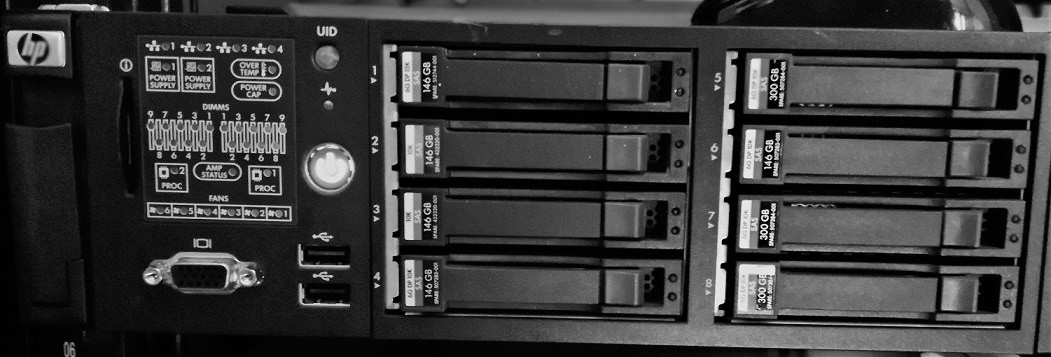
Figure 9.3 – DAS system
Now that you are familiar with local storage, let’s learn about network storage.
Understanding network storage
In contrast to local storage, network storage, as the name implies, refers to the storage device that’s connected to a computer network to provide data storage capabilities and access to users. Therefore, it can be understood that it is the network device, and thus interfaces that are common in networking are used. Network Attached Storage (NAS) and Storage Area Network (SAN) are the best examples of network storage. We will discuss these in the following sections.
Network-attached storage
As the name implies, NAS is a network appliance that connects to computers and servers through a switch and acts as dedicated storage in an organization’s network, as shown in the following diagram:

Figure 9.4 – NAS system
NAS is mainly used as the file server and connects to the network through a standard Ethernet connection. It brings flexibility so that organizations can rely entirely on NAS for file-sharing services without the need to use other servers for such tasks.
Storage area network
Like DAS and NAS, SAN is another in-store storage technology. However, unlike DAS and NAS, SAN is considered a dedicated network of storage devices because, as its name suggests, SAN is the type of LAN made of disks instead of computers. SAN is a shared pool of storage space that can be accessed by servers and clients in an organization. It mainly uses an Ethernet connection or Fiber Channel (FC) connected to Host Bus Adapter (HBA) interfaces. Hence, the HBA is an expansion card that’s added to a server to connect to a SAN. In addition, proprietary protocols or Simple Network Management Protocols (SNMPs) provide management for SANs, as shown in the following diagram:
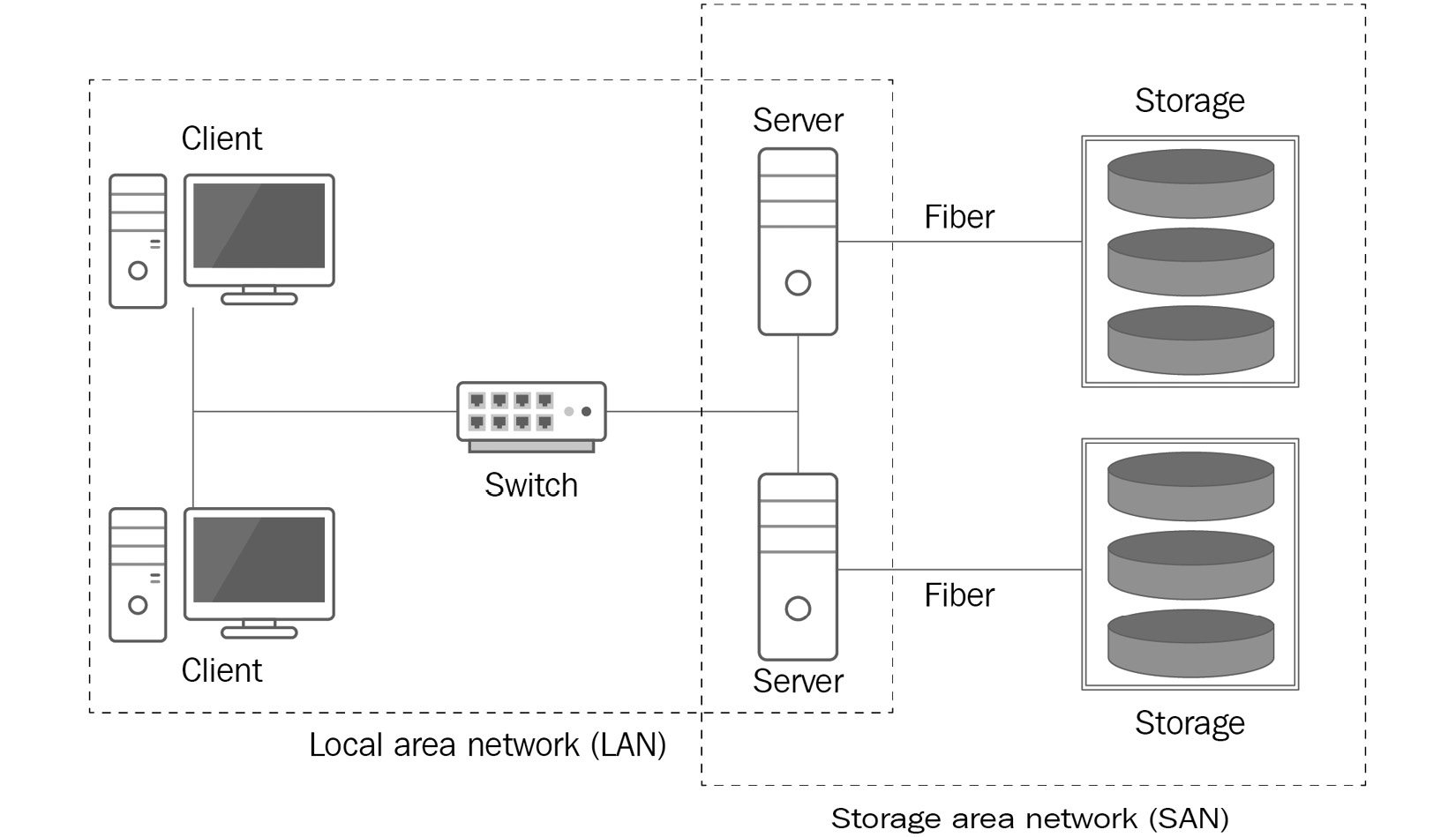
Figure 9.5 – SAN system
Now that you have been introduced to local and network storage, let’s get acquainted with block- and file-level storage. Both approaches represent how data is stored in storage technologies.
Differentiating between block-level storage and file-level storage
The following table will make it easier to understand and, at the same time, compare the file-level storage and block-level storage technologies:

Table 9.1 – Block-level versus file-level storage
Next, let’s learn about adapters and controllers so that you know how reading and writing take place in storage technologies.
Adapter and controller types
The disk controller is an electronic circuit located below the disk sealing part, as shown in the following figure. It performs operations such as spinning disks, moving heads for reading and writing, and communicating data to and from RAM:
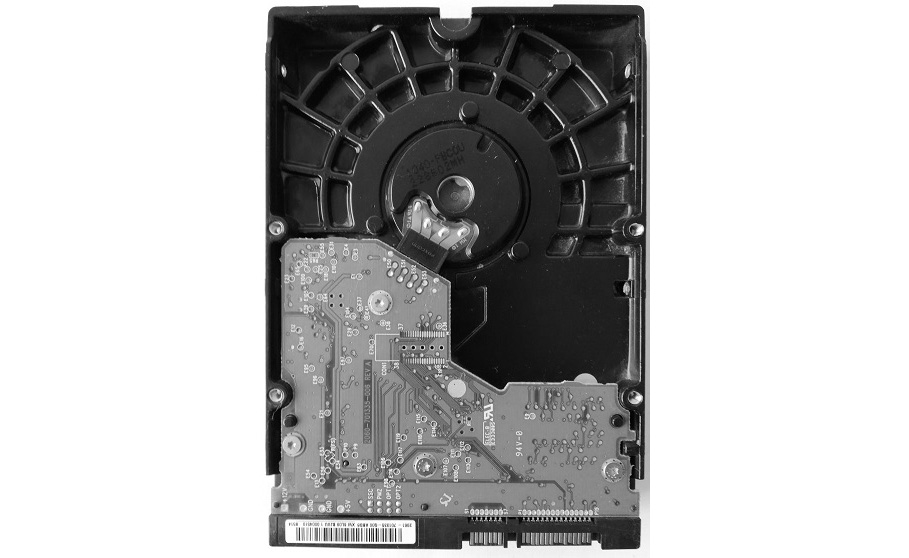
Figure 9.6 – Disk controller in HDD
Next, let’s understand the serial bus and data transmission technologies that transfer data to and from storage technologies.
Serial bus technologies
For data transmission, both parallel and serial communications are used. Thus, a string of 8 bits in the parallel transmission is usually transmitted at a time equal to 1 byte. In contrast, only 1 bit is generally sent at a given time in serial transmissions. Nevertheless, even though more bits are transmitted through parallel communication, serial transmission is the most widely used storage technology. This is because it is far more convenient for the disk controllers to handle bits arriving one by one (that is, serial transmission) rather than all together (that is, parallel transmission). Hence, the disk’s read-and-write head reads and writes 1 bit within the given time. Because of that, the serial method of transmission has proved to be more pragmatic by eliminating overhead processing, signal skewing, and crosstalk. As a result, the most widely used serial interfaces in storage technologies are SATA, SAS, FC, and USB technologies.
Next, let’s look at which storage protocols you will find easier to understand if you draw a parallel with networking communication protocols.
Storage protocols
Storage protocols allow you to store and retrieve data in/from storage systems. Mainly, storage technologies such as NAS and SAN utilize storage protocols. The most used storage protocols are as follows:
- Small Computer System Interface (SCSI) is a storage protocol that’s utilized in block-level storage systems. For example, the OS uses the SCSI protocol to read and write data on a SCSI controller that manages storage devices.
- Internet Small Computer System Interface (iSCSI) places the standard SCSI protocol in an IP packet, thus extending its functionalities throughout the organization’s network.
- Fibre Channel (FC) is another way of extending the functionalities of the standard SCSI protocol by enabling storage consolidations and high-speed transmission over longer distances.
- Fibre Channel over Ethernet (FCoE) does the same for the FC protocol as iSCSI does for the SCSI protocol. That being said, FCoE extends the functionalities of the FC protocol across Ethernet networks.
Important note
You can learn more about SCSI at https://www.lifewire.com/small-computer-system-interface-scsi-2626002.
Now, let’s learn about file-sharing protocols, which represent examples of networking communication protocols themselves.
File-sharing protocols
File-sharing protocols enable data sharing over LANs, WANs, and the internet. Simply put, file-sharing protocols provide the standard for file requests between clients and servers. The most widely used file-sharing protocols are as follows:
- Server Message Block (SMB) represents a file-sharing protocol that’s heavily used by Windows OSs. For example, Microsoft’s Common Internet File System (CIFS) is an SMB dialect, which specifies the SMB protocol’s particular implementation.
- Network File System (NFS) is a file-sharing protocol mainly used by Unix and Linux distros.
- File Transfer Protocol (FTP) enables file sharing by transferring files from site to site over the internet.
- Hypertext Transfer Protocol (HTTP) allows file sharing over a World Wide Web (WWW) service.
- Secure Shell (SSH) enables remote file sharing over a secure connection.
Important note
You can learn more about SSH at https://www.ssh.com/ssh/.
Next, we will learn about the HBA and FC switches for connecting network storage technologies such as SAN.
The HBA and FC switches
As explained earlier in this chapter, the HBA is an interface that enables fiber connectivity to the server. In contrast, the FC switch is a Layer 3 network switch. Therefore, both network components are compatible with the FC protocol. Moreover, a high-speed FC network medium connects the two, thus creating the FC fabric. The FC fabric consists of one or more FC switches and, as such, it constitutes the SAN topology.
Next, we will learn about the iSCSI hardware, another technology for connecting network storage technologies.
The iSCSI hardware
iSCSI, a form of block-level storage, uses an IP to send SCSI commands over TCP/IP networks. iSCSI works so that the clients, known as initiators, use the IP protocol to send SCSI commands called command descriptor blocks (CDBs) to storage devices known as targets. In SANs, the logical unit number (LUN) represents a logical disk. In iSCSI, TCP port 860 is reserved for the iSCSI system port, whereas TCP port 3260 is iSCSI’s default port.
Next, let’s learn about Storage Spaces Direct (S2D) to understand storage pools.
S2D
S2D, introduced in Windows Server 2016, is a supported feature in Windows Server 2022. In addition, it was updated to offer storage tiering when using fast media such as SSDs or NVMe for caching. Furthermore, S2D allows you to group disks into storage pools, thus creating software-defined storage spaces:
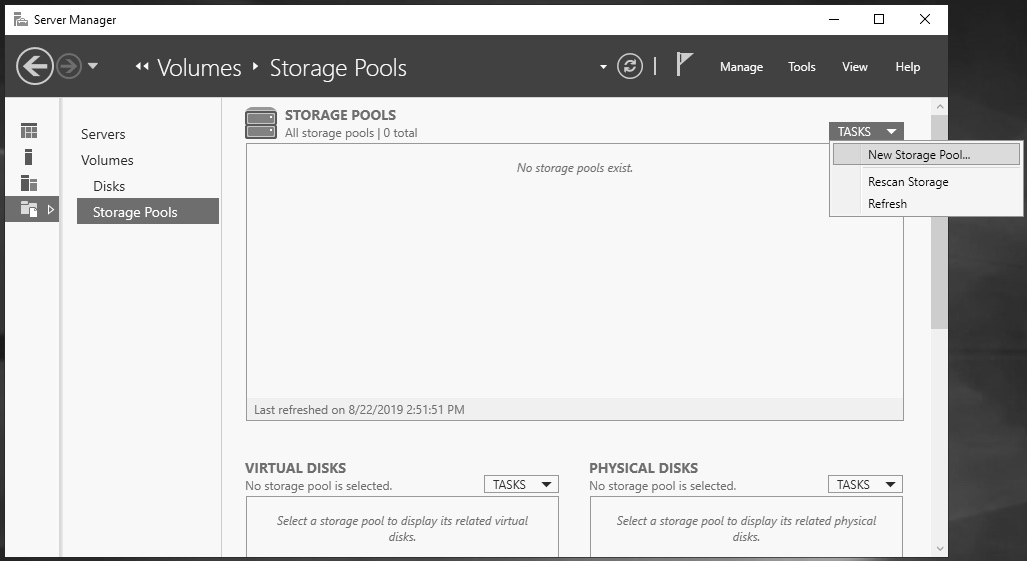
Figure 9.7 – Creating a new storage pool in Windows Server 2022
Now, let’s learn how the Dedup feature removes duplicated data.
Dedup
The idea behind the Data Deduplication server role, known as Dedup, is to provide disk space savings. Dedup is a technique that removes duplicated data from a dataset, thus storing a single copy of identical data on a disk. First, it analyzes the data to identify duplicated data in the dataset. Then, the original file is stored in storage media while the duplicated files are replaced with a reference that points to the original file:
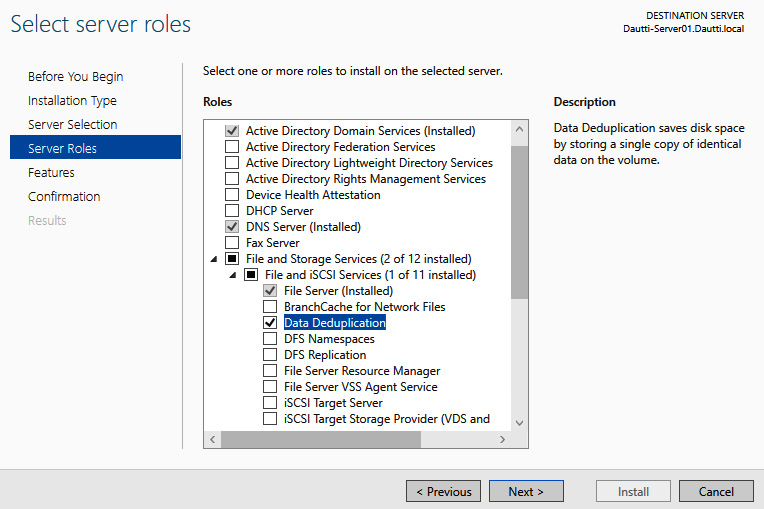
Figure 9.8 – Installing Dedup in Windows Server 2022
Important note
Cluster rolling upgrades let you upgrade the server OS in a cluster without the need to stop Hyper-V.
Next, let’s learn how storage tiering helps store data in high-performing storage.
Storage tiering
Another interesting built-in feature in Microsoft’s Windows Server is storage tiering, which allows you to automatically transfer the most frequently accessed files to faster storage. In simpler terms, this lets you combine high-performance storage with low-performance storage (for example, HDDs with SSDs) to reduce storage costs. Thus, the storage tiering agents will place the most accessed files on the faster storage, while rarely accessed files will be placed in slower storage.
Now, let’s learn how to manage storage with Server Manager and Windows PowerShell.
Managing storage
Before taking on storage management with Server Manager (servermanager.exe), ensure that the File and Storage Services role has been added to the server. As you know, to add File and Storage Services, use the Add roles and features option within Server Manager. The following screenshot shows how to manage storage using Server Manager on the local server:

Figure 9.9 – Managing storage with Server Manager
Besides Server Manager, the Windows Server storage can also be managed through Windows PowerShell. Among the cmdlets that can be used to manage the storage in Windows Server using the Windows PowerShell, there’s Get-Disk, Get-Partition, and Get-Volume, as shown in the following screenshot:
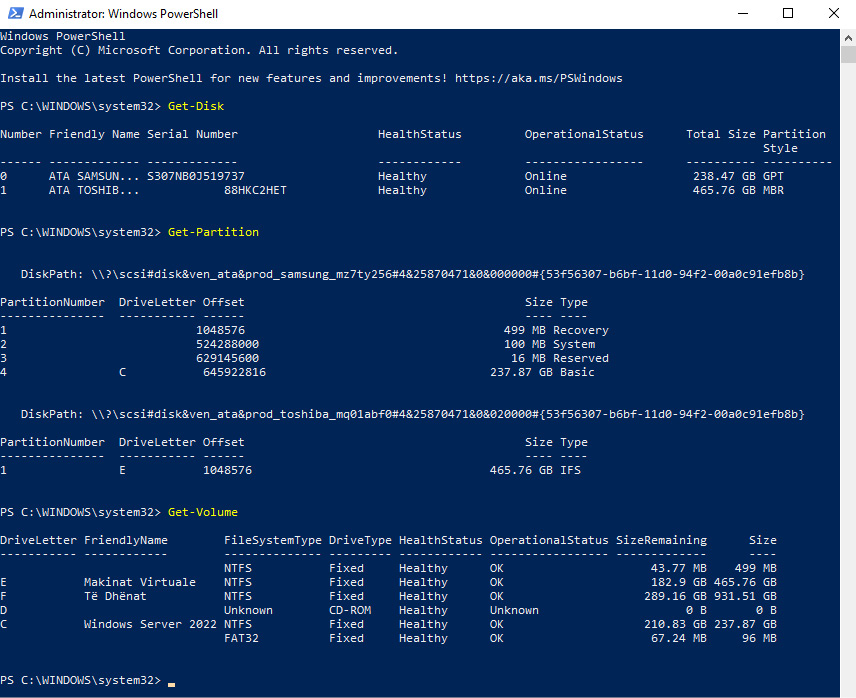
Figure 9.10 – Managing storage with Windows PowerShell
This section taught you about storage technologies, adapter and controller types, storage protocols, file-sharing protocols, and managing storage with Server Manager and Windows PowerShell. In the next section, you will learn about RAID.
Understanding RAID
Whether you have come across the term Redundant Array of Independent Disks or Redundant Array of Inexpensive Disks, know that you are dealing with the concept of fault tolerance in a Windows Server. That said, RAID is a technology that combines a considerable number of physical disks into a single logical unit so that it can protect data in the case of disk failure. At the same time, note that RAID is not a backup solution and should never be considered.
Let’s look at the various types of RAIDs to understand storage redundancy.
Types of RAID
There are a considerable number of RAID types. The most widely used RAID types are as follows:
- RAID 0 is known as disk striping. It offers higher read and writing performance but is not fault-tolerant. For example, on Windows Server 2022, you can create a striped volume if you convert the disk from basic into dynamic.
- RAID 1 is known as disk mirroring and requires at least two disks for its implementation while offering excellent read and write performance. It works so that all the data on disk A is mirrored on disk B. In the case of disk failure, the RAID controller uses any available disks.
- RAID 5 is disk striping with parity and requires three disks for implementation at a minimum. As a result, it represents the most fault-tolerant RAID that’s available. In addition, the parity data is spread across all disks, meaning that RAID 5 can withstand the failure of a single disk.
- RAID 01 or 10 (beware, it is not ten; instead, it is one zero) is the combination of striping and mirroring because it combines RAID 0 with RAID 1. Because of that, it requires a minimum of four disks for its implementation. In the case of disk failure, the rebuild time is very fast since the striping is spread across all drives.
Next, let’s compare hardware RAID and software RAID.
Hardware versus software RAID
Concerning the RAID deployment, there are two types of RAID:
- A hardware RAID deployment (see Figure 9.11) is an expensive solution and requires configuration before installing the OS. It is an electronic board that either the manufacturer of the server or the server’s technician will plug into the appropriate slot on the server’s motherboard:
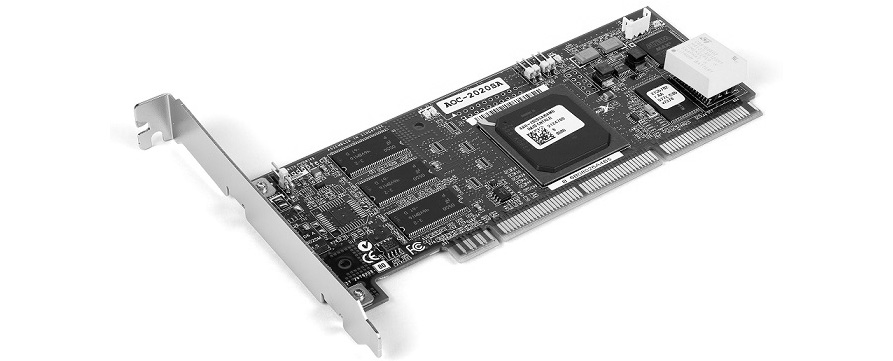
Figure 9.11 – The RAID controller
- A software RAID deployment is a cheaper solution that’s configured after installing an OS. Specifically, it is an application that you buy from a particular vendor.
Next, let’s understand Software-Defined Storage (SDS), where the software is used to provide a storage solution.
SDS
Due to budget constraints, an organization cannot afford to own NAS or SAN storage systems, so the alternative solution is SDS. Organizations can create SDS with local storage using S2D in Windows Server 2022. Therefore, SDS helps separate the software that manages the storage from the storage hardware itself. In addition, such a solution offers excellent flexibility in using various storage technologies.
Now, let’s learn how redundancy while using S2D enables fault tolerance and storage efficiency.
Resiliency using S2D
The fault-tolerance approach in S2D is resiliency, which offers a mirror with parity. This is similar to RAID software in deployment but with notable differences in Windows Server 2022. This is because S2D provides fault tolerance and storage efficiency.
Now, let’s learn about the high availability (HA) standard.
High availability
HA is a characteristic of a system that’s available anytime and anywhere. However, specific standards were established to achieve a HA requirement that relies upon numerous parameters. Hence, from backup to fault tolerance and resilience to reliability, all storage media and devices must be operational to make the system highly available.
The following table shows the HA standard:

Table 9.2 – High availability standard
In this section, you learned about the different types of RAID, the difference between hardware and software RAID, SDS, resiliency using S2D, and HA. In the next section, you will learn about disk types to understand the various storage technologies available for storing data.
Understanding disks
As you may know, a disk is a physical component or an object in which data is stored. However, storing data involves writing and reading data on a disk. Therefore, to become familiar with disk types, it would help if you get acquainted with their classifications and technical specifications. That way, you will understand any disk type’s storage features and characteristics. We will learn about the HDDs first.
HDDs
The HDD, as shown in Figure 9.12, is considered a secondary storage computer component that uses an electromotor to spin the disk. It also contains a magnetic read-and-write head and metal platters that permanently store data. Each platter includes tracks and sectors. The starting point for storing data in HDDs is the outer track. The read-and-write head is located above the disk platter at a distance of microns, thus never touching the disk. If it does, then physical damage occurs.
The data storage capacity is measured in bytes (nowadays, GB and TB), whereas the disk spinning speed is measured in Rotations Per Minute (RPM). The most common RPM rates for PCs and laptops are from 5,400 (5.4 K) RPM to 7,200 (7.2 K) RPM, while for servers, the most common RPM rates are from 10,000 (10 K) RPM to 15,000 (15 K) RPM.
Usually, the HDD is located inside the computer’s case and is mounted in a drive bay. However, there are also external HDDs, which are mainly used for storing and backing up data and not running the OS. In the event of HDD disposal, it is recommended to perform disk shredding, primarily if such disks were used to store data in financial organizations or banks:

You can learn more about HDDs at https://www.computerhope.com/jargon/h/harddriv.htm.
Next, let’s learn about SDDs, a storage technology similar to HDDs but with different technical characteristics.
SSDs
Like HDD, an SDD, as shown in Figure 9.13, is another secondary storage technology for PCs and servers. However, unlike HDDs, SSDs are considered to be memory modules with no moving parts. As a result, they use less voltage – usually 5V – than HDDs, which commonly use 12V to spin the disk platters.
SSDs are noiseless, more physically reliable, and provide faster data access. Recently, SSDs have been matching HDDs as far as capacity is concerned. Because of that, nowadays, SSDs have become the first choice for secondary storage in PCs and servers where an OS is installed and running. Therefore, many manufacturers have turned HDDs into the first choice for storing the application’s data on PCs and servers. Moreover, SSD drives are also part of NAS and SAN solutions:

Figure 9.13 – An SSD
Important note
You can learn more about SSDs at https://www.lifewire.com/solid-state-drive-833448.
Next, let’s learn about the Optical Disk Drive (ODD) to become familiar with lands and pits.
ODDs
Unlike HDDs, which use electromagnetic fields to read and write data from/to disk platters, an ODD, as shown in Figure 9.14, utilizes a laser beam under a specific wavelength to read and write data from/to compact disks (CDs). However, always differentiate between ODDs and optical disks (ODs), such as CDs or DVDs. The former is where a medium such as a CD or DVD is inserted. CDs contain tracks in the form of a spiral. In contrast to HDDs, which use the outer track, the inner track is the starting point for storing data on CDs and DVDs. As with HDDs, optical disks are measured by capacity in bytes. Usually, a CD’s storage capacity is between 650 MB and 700 MB, while a DVD’s storage capacity ranges from 4.7 GB to 8.5 GB. The speed of ODs is measured in KB/s and is determined by an X symbol equal to 150 KB/s. Therefore, if your optical drive has a speed of 24x, its speed is 24 x 150 KB/s = 3600 KB/s = 3.6 MB/s. There are three recording types of optical disks, as follows:
- CD-ROM and DVD-RAM are read-only optical disks.
- CD-R and DVD-R/DVD+R are write-once optical disks.
- CD-RW and DVD-RW/DVD+RW are rewritable optical disks.
The following figure shows an ODD:

DVDs and Blu-ray disks are the most widely used optical disks for writing purposes. The latter has been designed to supersede DVD technologies, thus achieving tremendous storage capacities. For example, a single-layer Blu-ray disk holds 25 GB, a dual-layer Blu-ray disk holds 50 GB, a triple-layer Blu-ray disk has 100 GB, and a quadruple-layer Blu-ray disk holds 128 GB.
Important note
You can learn more about OD types at https://www.ifixit.com/Wiki/Optical_Disc_Types.
Next, let's learn about basic disks based on the Master Boot Record (MBR) and GUID Partition Table (GPT) partition schemes.
Basic disk
Once you have installed the OS on the server’s hard disk (HD), the HD structure is in its basic configuration. This means that the primary disk configuration is organized into partitions. As you have learned so far, a basic disk is based on the MBR and GPT partition schemes, and, as such, one partition cannot be extended on one or more physical disks. Instead, a partition can be extended by adding unallocated space from the same physical disk.
Next, we will look at dynamic disks to understand how read-write performance can be increased.
Dynamic disk
Dynamic disk configuration was introduced to overcome the limitations of the basic disk by providing increased read and write performance with disk striping and by operating with volumes instead of partitions. This means that the volumes in a dynamic disk configuration can be extended to more than one physical disk, thus creating five volumes, as follows:
- A simple volume is a part of a physical disk that functions as if it were a separate unit.
- A mirrored volume is a fault-tolerant volume that copies data to two or more physical disks.
- A striped volume combines areas of free space from many hard disks into a logical volume.
- A spanned volume combines areas of unallocated space from multiple disks into a logical volume.
- RAID-5 volumes stores data with parity information across multiple physical disks.
Now that you know what basic and dynamic disks are, let us learn how to convert a basic disk to a dynamic one in order to have dynamic volumes in infrastructure.
Converting a basic disk into a dynamic disk
In Windows Server 2022, to convert a basic disk into a dynamic disk, you must complete the following steps:
- Right-click the Start button.
- Select Disk Management.
- Right-click the preferred disk, and, from the context menu, select Convert to Dynamic Disk..., as shown in the following screenshot:
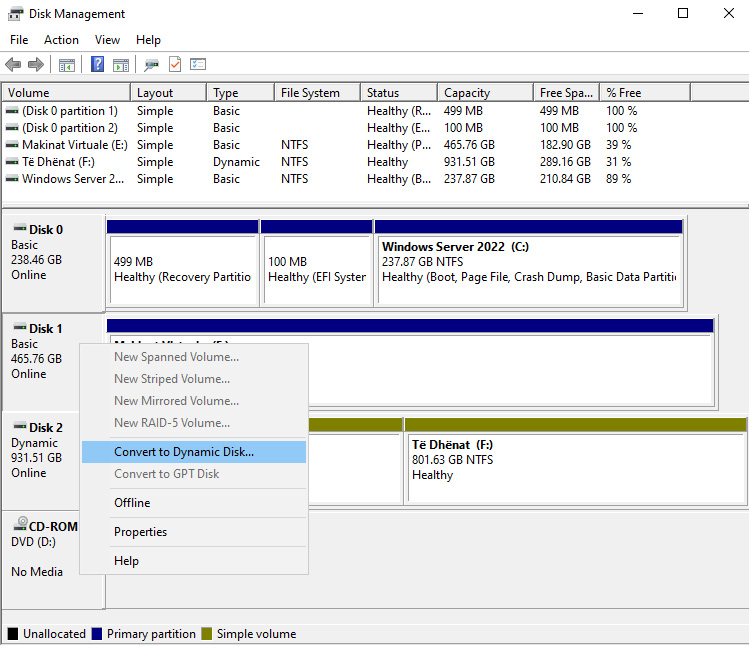
Figure 9.15 – Converting a basic disk into a dynamic disk
- If you have more than one disk, then, from the Convert to Dynamic Disk window, select the relevant disks and click OK.
- Click Convert in the Disks to Convert window.
- After reading the information in the Disk Management dialog box, click Yes.
- Shortly after, the conversion will be completed.
Next, let’s learn about mount points to increase the folder size.
Mount points
A mount point is established when attaching an unallocated partition to an empty folder. Such an operation helps increase the folder size if the partition runs out of space. Therefore, in Windows Server 2022, Disk Management (diskmgmt.msc) can be used to set up a mount point, as shown in the following screenshot:

Figure 9.16 – Creating a mount point with Disk Management in Windows Server 2022
Next, let’s learn about filesystems, which we can use to store and organize data in storage devices.
Filesystems
A filesystem organizes files on physical media, such as HDDs, CDs, and flash drives. Furthermore, a filesystem helps run operations on files and folders, such as naming, renaming, copying, moving, and deleting. In addition, a filesystem allows you to specify the place on a disk where the file is logically placed for storage and retrieval. Hence, the stored information would have been impossible to identify and retrieve without a filesystem. By taking a look at the following list, you will become familiar with the well-known filesystems that the Windows OS uses:
- File Allocation Table (FAT): This is the earliest filesystem that was used by both MS-DOS and Windows. As its name implies, it is based on a table that contains a map of clusters. A cluster is a unit of logical storage on the hard disk. FAT32 is the latest version of FAT.
- New Technology File System (NTFS): This filesystem was introduced in the 1990s with Windows NT 3.1 and is still used on Windows 11 and Windows Server 2022. Among the features that NTFS offers, there’s disk quotas, Encrypting File System (EFS), journaling, the Volume Shadow Copy Service (VSS), and security. NTFS is a native filesystem on Windows Server 2022.
- Resilient File System (ReFS): This filesystem was introduced in Windows Server 2012 and was meant to be the successor of NTFS. However, nowadays, it is mainly used on disks, partitions, or volumes where client/server application data is stored. ReFS is available as a disk format option in Windows Server 2022. The new features that ReFS offers include resiliency, performance, and scalability.
- Extended File Allocation Table (exFAT): This new version of FAT was developed primarily with portable storage devices such as USB flash drives and SD cards. Interestingly, exFAT is platform-independent, thus enabling drives that have been formatted with an exFAT filesystem to be supported by Mac computers.
Important note
A journaling filesystem is an important feature that maintains data integrity by keeping track of changes being made to data in a separate log, thus making it possible to restore data whenever a power outage or disk crashes occur. Microsoft has removed Journal.dll from Windows Server 2016. Therefore, it is not supported in Windows Server 2022 either.
Next, let’s learn how to mount a virtual hard disk (VHD) so that it looks and operates like a physical disk.
Mounting a VHD
Based on the concept of the mount point, which was explained earlier in this chapter, a mounted VHD drive is a mount point that represents a drive mapped to an empty folder on a volume that uses NTFS. Primarily, mounted VHD drives function like any other drive, except they use the drive path instead of drive letters.
In Windows Server 2022, you can attach a VHD to your server using Disk Management. To do so, follow these steps:
- Press the Windows key + R.
- In the Run window, enter diskmgmt.msc and hit Enter.
- In the Disk Management window, click the Action menu and select Attach VHD, as shown in the following screenshot:

Figure 9.17 – Attaching a VHD using Disk Management in Windows Server 2022
Next, let’s learn about Distributed File Systems (DFS), a filesystem that’s distributed in multiple locations.
DFS
If you have wondered how to synchronize files between servers in your organization automatically, then DFS will help. Moreover, it helps organize many distributed file shares into a DFS. Such sharing is done in an authorized and controlled way. With DFS, data stored in shared folders on different servers can be grouped into logically structured namespaces. This makes it possible for users to access the data as if it were stored on local computers. In Windows Server 2022, DFS is part of the File and Storage Services role. Thus, to install the DFS role in Windows Server 2022, you should expand the File and Storage Services role, expand File and iSCSI Services, and select DFS Namespace, DFS Replication, and File Server Resource Manager, as shown in the following screenshot:
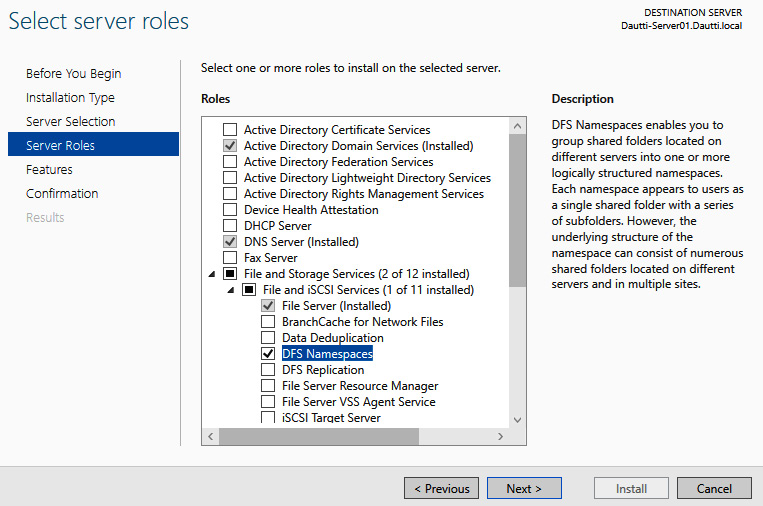
Figure 9.18 – Installing DFS in Windows Server 2022
In this section, you learned about disks, it's various types and components. The next section will teach you how to add the Data Deduplication role or Dedup feature on Windows Server 2022.
Chapter exercise – enabling Dedup on Windows Server 2022
This chapter’s exercise will teach you how to install the Data Deduplication role or Dedup feature on Windows Server 2022. To add the Dedup feature to Windows Server 2022, follow these steps:
- Click Add roles and features within the Server Manager | WELCOME TO SERVER MANAGER section.
- In the Before You Begin window, click Next.
- Click Next in the Installation Type window.
- In the Server Selection window, click Next.
- In the Server Roles window, expand File and Storage Services.
- Then, expand File and iSCSI Services.
- Select Data Deduplication, as shown in Figure 9.8.
- In the Features window, click Next.
- In the Confirmation window, click Install.
- When you notice that the installation has been completed, click Close, as shown in the following screenshot:
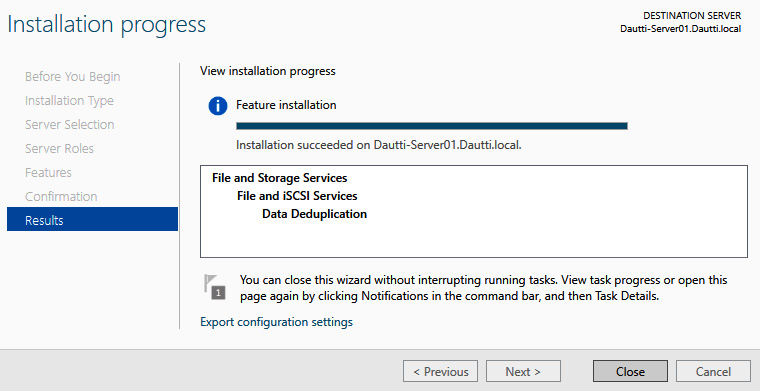
Figure 9.19 – Closing the Add Roles and Features Wizard
With that, you have successfully installed the Dedup feature on Windows Server 2022. However, to use Dedup at the volume level, you need to enable it, which requires some additional configurations.
Summary
This chapter taught you about the storage technologies available on servers and enhanced Windows Server 2022-related storage technology management features.
After exploring the various storage technologies, you now understand the multiple ways and methods of working with local storage, network storage, block-level storage, and file-level storage; adapter and controller types; serial bus technologies, storage protocols; file-sharing protocols; and more. You also briefly looked at managing storage with Server Manager and Windows PowerShell. Then, you learned about RAID and the difference between hardware and software RAIDs, which help enable HA for the services in your organization. Finally, this chapter concluded with an exercise that provided instructions on enabling the Dedup feature in Windows Server 2022.
The next chapter will teach you about tuning and maintaining the performance of Windows Server 2022.
Questions
Answer the following questions to test your knowledge of this chapter:
- DFS allows you to data from your server in an authorized and controlled way. (True | False)
- _______ is a network appliance that connects to computers and servers through a switch and acts as dedicated storage in an organization’s network.
- Which of the following are network storage technologies? (Choose two)
- DAS
- NAS
- RAM
- ROM
- Block-level storage stores data in files and folders representing volumes managed by the server operating system. (True | False)
- _______ is an electronic circuit that resides on a hard disk and performs operations such as spinning disks, moving heads for reading and writing, and transferring data to and from RAM.
- Which of the following are storage protocols? (Choose two)
- SCSI
- FC
- PATA
- SATA
- The HDD is a computer component that uses a motor to spin the disk, has a magnetic read-and-write head, and has metal platters that permanently store data. (True | False)
- _______ is a characteristic of a system that never fails, thus being available at all times.
- Which of the following are RAID types? (Choose two)
- RAID 1
- RAID 5
- RAID 15
- RAID 20
- SCSI, pronounced scuzzy, is another interface that connects storage and peripheral devices to computers. (True | False)
- _______ is a legacy interface that connects HDDs, ODDs, floppy disk drives, and related storage technologies to computers.
- Which of the following are optical disks? (Choose two)
- CD-ROM
- DVD-RAM
- EPROM
- POST
- Discuss Dedup in Windows Server 2022.
- Discuss S2D in Windows Server 2022.
- Discuss DFS in Windows Server 2022.
Further reading
To learn more about the topics that were covered in this chapter, take a look at the following resources:
- Hard drive: https://www.computerhope.com/jargon/h/harddriv.htm
- Overview of Disk Management: https://docs.microsoft.com/en-us/windows-server/storage/disk-management/overview-of-disk-management
- Optical Disc Types: https://www.ifixit.com/Wiki/Optical_Disc_Types
- Difference Between Basic Disk and Dynamic Disk: http://www.differencebetween.net/technology/difference-between-basic-disk-and-dynamic-disk
- What is RAID (Redundant Array of Inexpensive Disks)?: https://stonefly.com/resources/what-is-raid
